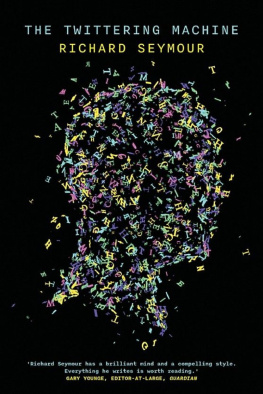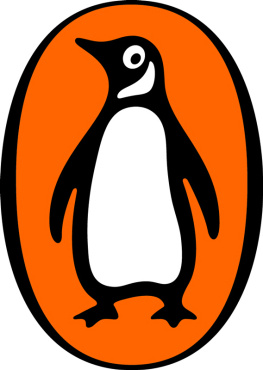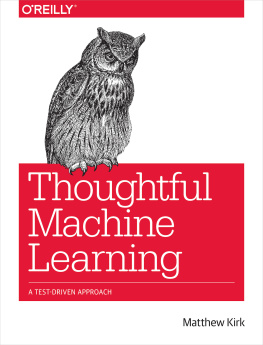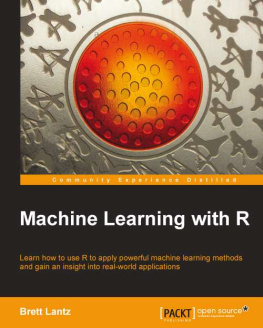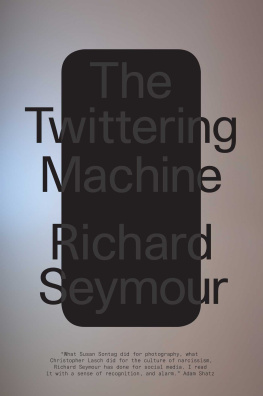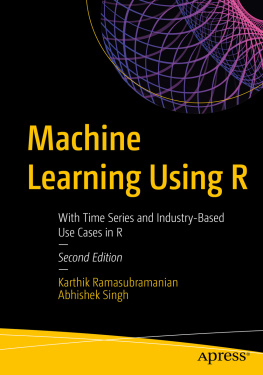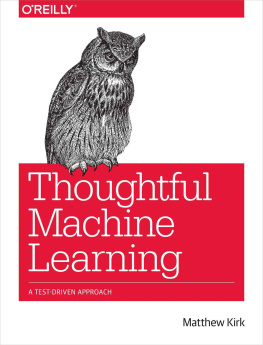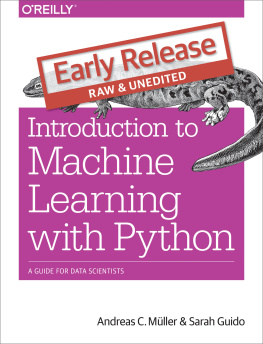Seymour - The Twittering Machine
Here you can read online Seymour - The Twittering Machine full text of the book (entire story) in english for free. Download pdf and epub, get meaning, cover and reviews about this ebook. City: La Vergne, year: 2019, publisher: The Indigo Press, genre: Art. Description of the work, (preface) as well as reviews are available. Best literature library LitArk.com created for fans of good reading and offers a wide selection of genres:
Romance novel
Science fiction
Adventure
Detective
Science
History
Home and family
Prose
Art
Politics
Computer
Non-fiction
Religion
Business
Children
Humor
Choose a favorite category and find really read worthwhile books. Enjoy immersion in the world of imagination, feel the emotions of the characters or learn something new for yourself, make an fascinating discovery.
The Twittering Machine: summary, description and annotation
We offer to read an annotation, description, summary or preface (depends on what the author of the book "The Twittering Machine" wrote himself). If you haven't found the necessary information about the book — write in the comments, we will try to find it.
In surrealist artist Paul Klees The Twittering Machine,
the bird-song of a diabolical machine acts as bait to lure humankind
into a pit of damnation. Leading political writer and broadcaster
Richard Seymour, author of Corbyn: The Strange Rebirth of Radical Politics, argues that this is a chilling metaphor for our relationship with social media.
Former
social media executives tell us that the system is an
addiction-machine. We are users, waiting for our next hit as we like,
comment and share. We write to the machine as individuals, but it
responds by aggregating our fantasies, desires and frailties into data,
and returning them to us as a commodity experience.Through journalism,
psychoanalytic reflection and insights from users, developers, security
experts and others, Seymour probes the human side of the machine, asking
what were getting out of it, and what were getting into.
This
is a story about desire and violence, as well as writing. It is also a
story about what we might be writing ourselves into, culturally and
politically. It is not an authoritative accout: that is impossible this
early in the evolution of a radically new technopolitical system. This
book is an attempt, as much as anything else, to work out a new langauge
for thinking about what is coming into being . . .
Richard Seymour has a brilliant mind and a compelling style. Everything he writes is worth reading. Gary Younge, Editor-at-Large, Guardian
A brilliant, urgent, game-changing intervention. China Miville, author of October: The Story of the Russian Revolution
A brilliant and provocative reassessment of a technology that has become apparently indispensable to modern life. Daniel Trilling, editor of New Humanist and author of Lights in the Distance
If you really want to set yourself free you should read a book - preferably this one. Observer, Book of the Week
A thrilling demonstration of what [resistance] can look like ... everyone should read it. Guardian
Clever, and alarming ... a first tentative vision of what a neo-luddite response to our predicament might look like. Spectator
Seymours compulsively argued book may just be the intervention we all need. Tatler.com
Richard Seymour is a writer and broadcaster and the author of numerous books about politics, including The Liberal Defence of Murder (Verso, 2008), Against Austerity (2014), Corbyn: The Strange Rebirth of Radical Politics (Verso, 2016) and The Twittering Machine (The Indigo Press, 2019). His writing appears in the Guardian, Jacobin, the London Review of Books, the New York Times and Prospect. He lives in London.
ISBN : 9781911648031
Formats : This function can be used only in the GUI
Seymour: author's other books
Who wrote The Twittering Machine? Find out the surname, the name of the author of the book and a list of all author's works by series.

